
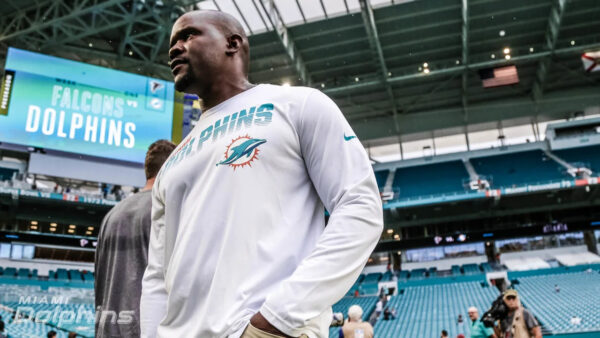
Defensive Free Agent Review
As we sit less than a month away from the 2021 NFL Draft and analyze the moves the Dolphins have made in Free Agency, I thought this would be a great opportunity to provide a primer on my view of the Dolphins pre-Draft, on the defensive side of the ball. Given the success the unit had last year and relatively little turnover of key components, to this point of the offseason, the defensive unit seems to fall by the wayside.
And I understand why. Miami’s focused on building around Tua Tagovailoa and seems primed to add an offensive piece with the sixth overall pick. But, if we’re honest, at this point, the defense is a lot closer to being a finished product (elite unit?) than the offense.
So, what follows is a bit of a charcuterie board of defensive topics on how Miami’s free-agent acquisitions could transform the defense, as well as two theories about the defense leading up to the Draft in a few weeks.
2020 Statistics
Points Allowed 338 points (6th)
Points per Game 21.1 points/gm. (T-5th)
Total Defense 367.9 yards/gm. (20th)
Run Defense 116.4 yards/gm. (16th)
Yards per Carry 4.5 yards/carry (T-16th)
Pass Defense 251.5 yards/gm. (23rd)
Yards Per Attempt 8.0yards/att. (T-30th)
Comp. % Allowed 62.9% allowed (7th)
3rd Down Defense 31.2% allowed (1st)
Sacks 41 sacks (T-10th)
Turnovers 29 total (1st)
Interceptions 18 total (T-1st)
Fumbles 11 total (T-4th)
[pickup_prop id=”5263″]
Position Guide
I think that it’s a bit kitschy that the NFL mandates teams to put out a defensive depth chart in either a 4-3 or 3-4 format on their website as the “official” depth chart on defense. Most NFL teams are in some form of sub-package – nickel, big nickel, dime, quarter, half-dollar – at least two-thirds of their total snaps. Nickel ought to be the format used. But that’s neither here nor there.
Back in 2019, a beat writer asked Brian Flores about a particular player and which position he played on defense. Brian Flores responded, and I’m paraphrasing, “We have 15 positions so that it could be a different position on any given play.” With that in mind, over the past two seasons, I’ve been able to “identify,” and I use that loosely, 14 positional roles Miami uses on defense. So here’s a quick refresher of what they are, how they’re used, and who played there in 2020.
Disclaimer: I don’t have access to the Dolphins playbook and do not know official positions or titles for each position. This list is simply what I’ve discerned various positions to be and how they’re used.

Rush End – This was Shaq Lawson’s position a year ago, but he has since departed. The player in this role generally plays a 5/6/7/9 technique look but can sometimes squeeze down to a 4 technique, typically when an Edge LB is also in the game. This is primarily a weakside or open-side defender, meaning there’s no TE to his side and/or he’s away from the offense’s strength.
1-Tech/NT – Raekwon Davis and Davon Godchaux, with the bulk of the snaps going to Davis after Godchaux landed on IR. This position plays primarily as a shade or 1-technique but can also line head-up on the center in a true 0, NT technique. Raekwon Davis also played some 2i and 2 technique.
3-Tech/Multi – Christian Wilkins and Zach Sieler played here. This position plays up and down the line, mostly as a 3-technique, but between Wilkins and Sieler, they combined to play every technique from 0 out to 5, with Sieler getting some work at Big End in 4-man fronts.
Big End – Emmanuel Ogbah’s spot a year ago, and what a force he became. This role mostly plays in a 5/6 technique front but can extend out to a wide-5, 7, or 9 technique. Ogbah was also able to reduce inside to play in a 4, 4i, and 3-technique in some packages. Jason Strowbridge got a few reps here as well.
Edge LB – This position is very similar to the Rush DE spot, and Andrew Van Ginkel found a home here in 2020. This role is essentially a stand-up DE, mostly playing in 5, wide-5, and 7/9 technique looks. There are minimal coverage assignments, so its basic function is to set the edge against the run and to rush or be involved in a rush game against the pass. However, this has not been a full-time position for the past two years.
ILB/Will – One of the primary LB spots Miami fields most every down; this was played by Jerome Baker in 2020. After a rough start, Baker played pretty well through the remainder of the season. This role is interesting, especially with Baker because it can be played as a traditional off-ball Will LB in 4-man fronts, or on the LOS on the open side in 4-3 extended fronts and 3-3 fronts on the open side, as well as being the protected ILB in 3-3 Bear fronts. It’s primarily a coverage role with some run-and-hit capabilities in the Bear front.
?NEW?@DolphinsTalk.com Podcast with Mike, @ian693, and @DolphinsTalkTom https://t.co/it3OuBlxxK
— DolphinsTalk.com (@DolphinsTalk) April 8, 2021
MLB – Primarily a B gap-to-B gap run defender, Elandon Roberts played this role in 2020 and was re-signed last week as I type this. With Roberts’ injury status in the air, we don’t know when his return timetable is; thus, I would expect to see a heavy dose of Benardrick McKinney in this role while also playing in others in 2021.
OLB/Sam – This role varies from the Edge LB position in that it, at least with Kyle Van Noy, encompassed nearly 30% of the snaps being off-ball. Van Noy was at his best for Miami on the LOS as an edge-setter and component piece in pass-rush games. Andrew Van Ginkel could fill this role in a position switch; he’s got the profile for it. Or, we could see a combination of players like McKinney and newcomer Brennan Scarlett get reps here. Miami could draft someone, obviously. We may also see a tweak in the defense, which may alleviate some of this spot’s concerns. Much more on this later.
Left & Right CB – Self-explanatory here. Miami primarily used Xavien Howard and Byron Jones at the left and right corner, respectively, last season, with Noah Igbinoghene filling in for both at various points in the season. This position requires players to play a lot of man, both press and off-man, and various zone coverages that look somewhat like man coverage or are disguised as underneath defenders: Cover 3, Cover 5, Cover 6, and Cover 6 Buzz.
Nickel – Perhaps no other spot on defense will field as much competition for the starter as the nickel corner spot. Nik Needham had a solid season but finished on a sour note, getting torched by Isaiah McKenzie in Week 17. Miami brought in free agent Justin Coleman, and we’ve seen some indications in the press that Noah Igbinoghene may get a shot here as well.
Big Nickel – The role that Minkah Fitzpatrick didn’t want ended up being filled a year later with 2020 3rd round pick Brandon Jones. Jones did some really nice things as a rookie, especially in run support and in pass-rush games. With continued development in coverage, including some work last year as a split safety, he could become a key cog in the defense a la Patrick Chung.
Free Safety/MOF – Somewhat self-explanatory here. MOF, meaning “middle of the field,” indicates that this is a true deep safety position. As much as some Dolfans have wanted to replace Bobby McCain, he was fantastic in this role in 2020 and should hold onto it this year. Historically, this position has seen converted cornerbacks thrive, and McCain, so far, looks to continue that trend. McCain, a former nickel, also adds some flexibility by being used as a Blitzer or coverage player from the slot when needed and was routinely used in this role in Miami’s Cover Zero packages.
Strong Safety – This isn’t your typical James Washington, John Lynch, Steve Atwater, or Reshad Jones big hitter in Miami’s defense. Eric Rowe has played very well here as a tight end coverage specialist, robber, and zone player since converting to this role in mid-2019. Rowe has been used in the box as an overhang player in the slot and as a split safety from this position.
Free Agent Signings
Miami’s free-agent signings, to me, are indicative of two things. First, they definitely want improvement against the run. And secondly, they want to create more flexibility with how they deploy their defense. We’ll take a look at specifics for each player in a moment to demonstrate these two ideas. Starting with the obvious, it’s clear that Adam Butler, John Jenkins, Benardrick McKinney, and the re-signing of Elandon Roberts are guys who are going to be in the middle of the defense, in most cases and to help against the run. Justin Coleman, in my opinion, gives Miami added competition/depth at the slot corner position. Starting from the front of the defense and working to the back, let’s look at what each player will bring to Miami.
Adam Butler – Butler should fit right into Miami’s interior D-line rotation from day one, and I know this sounds like it runs counter to the paragraph above, but Butler’s biggest impact will come in the passing game. Butler has racked up 107 pressures over the last four seasons, including 23 last year to go along with 4 sacks. While he can generate pressure on his own like the sack below, he’s also a key cog in multiple pass-rush games. Miami can deploy him as a nose on 3rd downs, and he can act as a pick player or rusher.
This clip shows Butler working as a 2 or 3 technique; I can’t tell from this angle against the Jets RG. He wins off the snap with speed and uses an inside rip to get to Darnold for the sack.
Adam Butler pic.twitter.com/AqTwvhi4pp
— Kevin Dern (@KevinMD4) April 7, 2021
Working as a pick player here, Butler and Rashod Berry can “pick” the Chargers RG and RT, allowing Josh Uche to loop back through the backside B gap to pressure Justin Herbert. Butler ends up in a bit of a “no man’s land” situation, but he’s able to read Herbert and get his hands into the passing lane for a deflection resulting in an incompletion.
Adam Butler pic.twitter.com/hjCy44N6JW
— Kevin Dern (@KevinMD4) April 7, 2021
While Butler’s PFF numbers against the run aren’t great, he still has his fair share of wins. Unlike Christian Wilkins, who wins with power more often than not, Butler wins with quickness and hands, as the following clips show.
In this play against the Chargers, the Patriots D-line shifts late, with Butler lining up in a 2i-technique on the backside. He’s able to swim Trai Turner and get inside of Bryan Bulaga to track down Austin Ekeler going back to the play side.
Adam Butler pic.twitter.com/WQyuQqBCRx
— Kevin Dern (@KevinMD4) April 7, 2021
The swim move is kind again to Butler against the Cardinals. Lined up as the backside 2i-technique again, he shows great recognition of the split zone, swims the left guard, and stops our old pal Kenyan Drake for a loss.
Adam Butler pic.twitter.com/Ai9oLQEARp
— Kevin Dern (@KevinMD4) April 7, 2021
Butler can also two-gap, as we’ll see here. He can get good arm extension and locks out the Bills center at the line of scrimmage, allowing Chase Winovich to chase down Zack Moss on the backside zone run. Butler gets an assisted tackle for his work here.
Adam Butler pic.twitter.com/ldB7NaQru2
— Kevin Dern (@KevinMD4) April 7, 2021
Butler’s addition also allows us the ability to play Christian Wilkins and Zach Sieler more on 1st and 2nd downs against the run or in different spots on 3rd downs. Both of them had played nose in 3rd down packages last year. Wilkins, especially, has been good against the run, so perhaps keeping him fresher brings improvement there in a team sense. As for Sieler, I still think he’ll get a fair share of snaps as a DT and 3rd down player, but I think they might, and I emphasize might, have their eye on him for another role. And that ties into their most recent signing John Jenkins. I’ll explain in a minute. Butler will contribute heavily in the rotation, and while his best work is likely to come as an inside rusher, he can still make plays in the ground game – him being more consistent against the run would be a nice boost for the IDL rotation.
John Jenkins – The signing of John Jenkins is pretty straightforward. He’s a big, physical, “traditional looking” nose tackle that can provide extra support against the run. Raekwon Davis played very well the final 2.5 months of the season, really from the Rams game on, but Benito Jones wasn’t very impactful when he went out of the game. I think John Jenkins benefits the Dolphins here. And as you can see from the clips below, he can still make plays despite being the team’s elder statesman.
Lining up as a true NT in a 0-technique against then-Packers C Corey Linsley was a good way to start this off, I think. Here we see Jenkins maintain his ground, avoid getting knocked back from the double-team, and stand up Jamal Williams for a stop.
Jenkins pic.twitter.com/2w0xcVGqdf
— Kevin Dern (@KevinMD4) April 8, 2021
Against Jacksonville, we see him a shade or 1-technique to the strongside. Jacksonville will run a design wind-back play, which gets blown up by the blitzing safety, so the play ends up staying on the weakside. Jenkins can play through the double-team of the C and RG to get over and plug any semblance of a hole before help arrives to make the stop.
Jenkins pic.twitter.com/BMnKbSwDA8
— Kevin Dern (@KevinMD4) April 8, 2021
This will be exactly what Miami asks him to do. I mentioned before that Jenkins’ arrival might mean something for Zach Sieler. Coupled with Shaq Lawson’s departure via the trade with Houston, Miami doesn’t really have a direct replacement for Lawson. However, if we go back last year and look at some of the games Miami played, we can see that Zach Sieler made some plays from DE in a 4-man front. Here are a few examples of him playing the “Big DE” role for Miami. With Adam Butler also capable of playing inside, I think Josh Boyer will have more freedom to use Sieler as the Big DE. While he wasn’t aligned there with great frequency, Sieler often made good things happened as an end in 4-man D-line groupings.
In the clip against the Jets, Sieler is lined up in a 5-technique, makes a pre-snap shift to a Wide-5 technique, and immediately gets faced with splitting a double-team by TE Ryan Griffin and LT Meckhi Becton. Becton wins initially, but Sieler can reset his hands, fights through the block, and combines with edge LB Andrew Van Ginkel to make a stop for a gain of one.
And who could forget this play against the Cardinals to thwart a drive? Because of how the Cardinals designed this play – double-teaming Kyle Van Noy, if Sieler doesn’t get off the block by the extra lineman, the Cardinals get a first down. But because he can reset the LOS, Elandon Roberts and Xavien Howard can knife and help make a critical stop.
— Kevin Dern (@KevinMD4) April 7, 2021
Sieler also notched a sack against the 49ers and vaunted LT Trent Williams due to a miscommunication by the 49ers O-line, but he also had several nice rush reps on other snaps in the game. Sieler and Van Ginkel can form a devastating tandem, especially in the 4-2 or 4-3 “extend” fronts, where the OLBs are on the LOS just outside each DE.
Sieler pic.twitter.com/liIaOV7epF
— Kevin Dern (@KevinMD4) April 7, 2021
While I think the Dolphins may address DE early, I think they need to give a fair amount of thought into playing Zach Sieler there more. It’s a boost to the run defense, and I think it also manufactures a way to get Andrew Van Ginkel onto the field more than he was in 2020.
Brennan Scarlett – Brennan Scarlett is a candidate to get at least some of the snaps vacated by Kyle Van Noy’s release. Scarlett is a big, strong, physical Edge LB who can be effective against the run, as you’ll see below. But he’s not as football savvy or as quick as Kyle Van Noy was for Miami – few players are, though. Scarlett should serve as a light rotational player and as a backup, dependent on further additions (i.e., Draft or trades) or as a run-down specialist with some room for development.
Against the Titans, Scarlett lines up in a stand-up 8 technique (head up on a second TE). He’s able to use his strength to stack the TE at the line of scrimmage and parlay that into a wrong arm while keeping his head inside to read the run. He’s able to disengage and stops Derrick Henry for a loss. An awe-inspiring individual play here. This is what he can bring to the Dolphins—physicality on the edge. You’ll see this in a few of the clips I have for Benardrick McKinney as well.
Scarlett pic.twitter.com/bcdcRQgk0i
— Kevin Dern (@KevinMD4) April 7, 2021
Benardrick McKinney – Other than Will Fuller’s addition, Miami’s trading for McKinney is the move of the offseason, IMO. And I think you could even make that argument in a vacuum that it’s better than the Will Fuller signing on its own. McKinney is a big, strong, versatile player who will be able to help in several facets.
While he’s primarily an inside or middle linebacker, he’s also experienced playing Edge LB in Diamond (3-3-5 nickel package) fronts. This was one of Kyle Van Noy’s roles, so there’s a possibility that McKinney can be used there. Below we’ll see him as the edge LB against the Chiefs in Week 1 of 2020. Here he’s in a stand-up 5-technique and is going to play a “high gear” technique, meaning he’s striking hard and fast at the snap, crashing inside, allowing Zach Cunningham to read the play and scrape to make a tackle.
BMcK Diamond pic.twitter.com/HeN0pJTU0R
— Kevin Dern (@KevinMD4) April 7, 2021
While Kyle Van Noy was primarily an edge LB, he played roughly 30% of his snaps off-the-ball, where McKinney will likely play most of his snaps. In the two clips below, we can see McKinney being used as a key cog in a pass-rush game, much like Van Noy was a year ago in some of Miami’s twist-games and looping on blitzes.
In the first clip against the Bills, McKinney is going to rush the play-side B gap. At the last second, he loops around the “pick” players and comes through the backside B gap to split Josh Allen’s sack with Jadeveon Clowney. If this pass-rush game looks familiar, and it should, it’s because Miami also uses this.
BMcK pic.twitter.com/MtWuBuoSG5
— Kevin Dern (@KevinMD4) April 7, 2021
Same thing here against the Cowboys from a couple of seasons ago as a host of Texans sack Dak Prescott.
BMcK pic.twitter.com/Gwd5THBiRm
— Kevin Dern (@KevinMD4) April 7, 2021
Where I think McKinney has a chance to separate himself, though, is in run defense. He can play effectively from the edge or off-ball, and in my opinion, will likely take away snaps from both Jerome Baker and Elandon Roberts, in addition to filling some of the Kyle Van Noy role. Sifting through McKinney’s games, he’s just so good at reading and flowing to the ball against the run, so I just decided to include multiple clips here. He will improve Miami’s run defense just by doing what he’s doing in these clips.
Against the Vikings and Dalvin Cook, we’re going to see McKinney’s tracking ability on display, as well as his ability to flow to the ball and break down to secure a tackle. Notice who sets the hard edge against the pulling guard on this play. Brennan Scarlett.
B McK pic.twitter.com/rsVcNHMRQH
— Kevin Dern (@KevinMD4) April 7, 2021
The Texans played some weird fronts, like this inverted 3-4 Over front where McKinney is the “Moe” LB (strong, inside backer) and ends up basically playing like a 4-3 Will. Note the throttle control not to overrun the play and stay backside. We also see Brennan Scarlett with a high-gear technique off the edge to knife in and tackle Cook with a little help from B-Mack.
BMcK and Scarlett pic.twitter.com/5MkYgKFzOp
— Kevin Dern (@KevinMD4) April 7, 2021
On the goal line against the Steelers, McKinney gets caught with a two-way go here because of how this play gets blocked. What’s so impressive about this is that McKinney initially chooses the wrong gap, shows some impressive lateral quickness, and still stuffs Benny Snell to prevent a touchdown. This is something special here, and I’d cite this as what puts McKinney in a class ahead of Elandon Roberts and Jerome Baker in run defense.
BMcK pic.twitter.com/KXOZtTORNq
— Kevin Dern (@KevinMD4) April 7, 2021
I wanted to highlight McKinney’s range as well. It’s something we don’t often see a lot of out of Elandon Roberts. This showcases McKinney’s throttle control again as he slow-plays Clyde Edwards-Helaire as he looks for any kind of cutback run, then hauls the mail and arrives with some authority to help with a stop.
BMcK pic.twitter.com/Ijh9RxRucw
— Kevin Dern (@KevinMD4) April 7, 2021
You get the point by now, but what’s one more clip, right? This one is on the goal line against the Chiefs. McKinney can read the split zone action here, avoids getting cut off by Travis Kelce, and just seeks out the ball carrier.
BMcK pic.twitter.com/SP9toRMapw
— Kevin Dern (@KevinMD4) April 7, 2021
To sum up, the meaning of Benardrick McKinney’s addition, let’s put it like this. He’s going to make Miami’s run defense better. He’s more versatile than Elandon Roberts on the inside, and you can play him on the edge if needed. While he’s not a straight edge-rusher, you can do some creative things with him in the passing game—a potential 3-down player in this defense, which is pretty rare among front seven players.
Elandon Roberts – Barry Jackson of the Miami Herald reported that Elandon Roberts’ goal was to be ready for week one of the 2021 season. Given that I’ve not seen any specific reports of his injury suffered in the Week 16 game against the Raiders, I’m unsure whether that goal is lofty or realistic. I guess we’ll see.
But, if healthy, I think Elandon Roberts serves in a similar role in 2021 to what he did last year, maybe just with fewer than the 402 defensive snaps he played. That role being a B gap to B gap run defender who can shoot gaps and be a timely Blitzer now and again. We all saw it last year, but just for fun, here’s both of the big TFLs Roberts had against the Rams last year, including one against Malcolm Brown.
E-Rob pic.twitter.com/ZKY3Q7MzuP
— Kevin Dern (@KevinMD4) April 7, 2021
This one is so impressive; it just smokes right through Gerald Everett. Love it!
E-Rob pic.twitter.com/Ct2aaN4ve4
— Kevin Dern (@KevinMD4) April 7, 2021
Duke Riley – Riley, to me, seems destined to be a special teams signing, much like Kamu Grugier-Hill a year ago. There may be some opportunity at ILB for Riley to play in certain situations – against athletic quarterbacks as a spy when you need extra coverage – but I’d imagine McKinney, Baker, and Roberts take the bulk of the off-ball LB is snaps this year. That said, Riley can still move and shows some nice range both against the run and in coverage. Riley, a special teams captain in Philly, will likely have a big role in that phase for Miami.
I know seeing the Wide-9 gives Dolfans the heebie-jeebies, but I had to spotlight Duke. Here against Seattle, we’ll see the Seahawks do a naked pitchout, and Riley fights off the criminally underrated Duane Brown to track down Carlos Hyde to prevent a first down.
Duke Riley pic.twitter.com/ocy1l6kIDo
— Kevin Dern (@KevinMD4) April 7, 2021
Justin Coleman – This signing seems like it’s directed specifically at Nik Needham’s performance in the Week 17 Bills game. Needham had a pretty solid season that Isaiah McKenzie unraveled in Week 17, and if you drill down into what Miami needs to be better at, they could add play from the slot to that list. I still think Needham will continue to develop there, but Coleman – and perhaps Noah Igbinoghene – could give him an extra push.
Like most Lions defenders not named Romeo Okwara, Coleman had a rough time in Detroit last year with Matt Patricia’s defense. Coleman had been one of the better slot corners in the league with Seattle before signing with the Lions in 2019. Through six seasons, he’s registered 41 PBUs, including 13 in his first year in Detroit. Coleman also cut his teeth in the NFL on special teams in New England and was a stalwart there for the Lions as well.
When I stumbled onto this play, I saw that Justin Coleman was aligned 1-v-1 against Allen Robinson in the slot, and I immediately expected bad things to happen. But instead, what happened is that we see Coleman come out of his shuffle step and cut off Robinson on the over route. Mitchell Trubisky turns the play into a scramble drill, and Coleman can stay with Robinson the whole way and disrupts Robinson’s hands at the catch point for an incompletion. A very nice rep!
Coleman vs A-Rob pic.twitter.com/dqSJVP6KAa
— Kevin Dern (@KevinMD4) April 7, 2021
Coleman’s lined up as the left gunner, to the bottom of your screen, on this punt. He does exactly as he’s coached here: gets inside his man as the punt goes to the opposite sideline, maintains the ability to contain a return to the wide side of the field, tracks the ball, and secures it to down the punt inside the 10-yard line.
Coleman pic.twitter.com/VBNqQIkZdO
— Kevin Dern (@KevinMD4) April 7, 2021
Given what Josh Boyer, George Kuntz, and Gerald Alexander have done with Miami’s DBs over the past two seasons, it wouldn’t surprise me one iota to see Coleman wrangle the starting nickel corner job away from Nik Needham. It just wouldn’t. If he doesn’t win it, then he’s likely pushed Needham and might have a shot at sticking with the Dolphins in a special teams role.
What is Miami Still Missing on Defense?
With these signings in tow, what are the Dolphins still missing as we sit three-ish weeks away from the Draft? I think they’ve made a concerted effort at improving the run game, and I hope the clips above demonstrated that – primarily with the additions of Butler, Jenkins, McKinney, and Scarlett. But I think they’re still missing a presence on the edge. I do believe Zach Sieler will get a chance to play there and play there a lot. However, I think that given Emmanuel Ogbah is at this point in the last year of his contract and we’ve really only seen baby step reps from Jason Strowbridge, I think another iron in the fire is in order.
I think they’re relatively set with interior players, off-ball linebackers, and in the secondary. In general, they’ll need to backfill some of the depth positions, and that can be done with low round picks and UDFAs, but the glaring hole on the defensive side of the ball is on the edge. As you probably know by now, I’ve studied the Patriots defense from 2018 when Brian Flores was the de-facto coordinator, and I’ve studied Miami’s defense the past two years. With the current holes they have and knowing, to some degree at least, their history and working knowledge of the defense, I’ve come up with two theories for 2020, and they are:
Theory 1 – Because of the free-agent additions and the development of Zach Sieler and Brandon Jones, I think we’ll see the Dolphins used more 4-man lines in 2020.
Theory 2 – These free agent acquisitions have given the Dolphins flexibility to address the “edge” in the Draft; they may be more appropriately set up to select a defensive end than an edge linebacker.
Okay, so let’s address these. I could’ve gone with a less specific approach, but I wanted to put my theory to the test. Now, let’s start with some basis for the first hypothesis. As I’ve mentioned, we know that Brian Flores was the de-facto Defensive Coordinator for the Patriots during their 2018 Super Bowl Run. And, I’ve mentioned both on the podcast and in prior articles that his most widely used formations – note, that’s a schematic package, not personnel grouping – was that of a 4-2-5 set, which they ran on 307 snaps. 3-3-5 (226 snaps) and 3-2-6 (162 snaps) were their next most-used formations.
I haven’t had a chance to do the numbers from 2019 or 2020 – that’s my own fault since it’d be more data. But, let’s look at what Miami’s done…or probably more appropriately, tried to do the past two years. In 2019, the only free agent they even thought about throwing big money at was DE Trey Flowers, who went to Detroit on a $90M deal. I think Miami’s offer was $80M give or take. Last year Miami brought in Shaq Lawson on a $30M contract. While he wasn’t and isn’t Trey Flowers, he was probably the closest player to him, and I concede that’s stretching a little bit. I don’t know that Miami did all they could’ve done to use Shaq in this defense, but he ultimately got outplayed on the edge by Andrew Van Ginkel and Miami moved on, gaining McKinney in the process.
I think it’s harder to find a 1:1 replacement for Kyle Van Noy, especially in Miami’s defense. With the current crop of college LBs, I think they’ve all got areas of their games that need development to catch up to where Van Noy is as a player. Consider:
Azeez Ojulari – Doesn’t play off-ball LB, so that’s something you’d need to teach.
Joseph Ossai – Only spent one season (plus a bowl game) on the edge.
Baron Browning – Wasn’t effective as an off-ball LB early in his OSU career, just learning to play edge.
Hamilcar Rashed – Hasn’t played off-ball LB that I’ve seen, and I question his speed.
We saw the Dolphins take Noah Igbinoghene, who’d only played corner for two years, in round one; I think the circumstances were different. At the time, Miami was coming off a 5-11 season with minimal expectations. This year, especially on defense, they’re close to being an elite unit. While I’d advocate for the first three names on the list above and love them as picks, I wonder if Miami’s new flexibility to play Zach Sieler as a “Big DE” might mean they’re more interested in 4-man fronts, and coupling that with what’s available, perhaps Miami leans more toward someone like Kwity Paye, Carlos Basham, Gregory Rousseau, or Jaelan Phillips at 18.
In my opinion, with the parts they have – namely McKinney, Scarlett, and Van Ginkel – I think you can replicate what Kyle Van Noy gave the defense aggregately. Easier said than done, but still possible. What Miami doesn’t have, and hasn’t during Brian Flores’ first two seasons, is someone like Trey Flowers who can pass-rush set a hard edge in the run game, pass-rush from the edge, and be a moveable chess piece along the defensive line. Emmanuel Ogbah was fantastic last season, but it’s not in his wheelhouse to rush over a center or guard the way Flowers could.
Perhaps Miami values the athleticism and versatility of the four defensive ends I mentioned enough to stump for one at 1.18. Having Zach Sieler able to be, at the least, a part-time player at DE will help. You could look to the 49ers and their growth plan for Aldon Smith as an example. They played him primarily on 3rd downs as a rookie behind Parys Haralson, and he ripped off 14 sacks as a rookie. I doubt that any of the four ends would do that, but I think they’d give a decent shot at making up the sack production of Van Noy, who had six, and certainly Shaq Lawson, who had four.
The other component to playing more 4-man fronts is Brandon Jones. We all know that Minkah Fitzpatrick wanted no part of being Miami’s version of Patrick Chung, though he likely would’ve been really good at it, and the team moved on. They drafted Jones a year later, and we saw him get some exposure to that role in Miami’s defense last year. I guess that with the flexibility to play Zach Sieler at DE more and a possible draft pick joining the DE group, that Miami will run more 4-man fronts and play Brandon Jones more in 2021. With another year of development, we may see Jones have a nice uptick in play and improve upon his early returns from a year ago.
For starters, in this clip from the Chargers game, Miami’s in a 4-2 alignment, with Brandon Jones playing as an overhang defender. This alignment is what I could see the Dolphins using more of in 2021, with Baker/Roberts and McKinney as the two off-ball backers. While he’s not directly on the line of scrimmage, Jones reads the TE release and the run fake and closes on the zone read, first tracking toward Herbert and then toward the ball carrier making the tackle.
Brandon Jones pic.twitter.com/26Uyq7kMiX
— Kevin Dern (@KevinMD4) April 8, 2021
I couldn’t find a direct example of Brandon Jones having to set an edge the way Patrick Chung did for the Patriots. I suppose one reason is that Chung, who was 215lbs, is bigger than Jones, who was listed at 191lbs. Miami may not want him directly engaged, given how athletic he is, and may have opted to play him more as an overhang player to redirect without being directly engaged by a blocker.
The closest play I came up with is below. Bear with me for a second here, as I feel l need to set this up a bit. Miami is in a 3-2 Ruby (Dime) package here. Emmanuel Ogbah, who is at LDE on this play, lines up in a 5-technique where a DE in a 4-man front would typically align to the open side. Kelce, who is originally detached pre-snap, comes in motion, which puts Jones in a 6-technique position. Kelce down blocks, giving Jones an open window read…right into a pulling guard which he takes on, thus allowing Jerome Baker to scrape nearly unimpeded, to combine with Jones for a tackle for no gain.
Brandon Jones pic.twitter.com/24P8L5v7wW
— Kevin Dern (@KevinMD4) April 8, 2021
Having the flexibility to play Jones in the slot also allowed Miami to get creative with some of their packages. They’re in their 3-2 Ruby again here, but this time they aligned Emmanuel Ogbah and Shaq Lawson tighter to the ball in 5-techniques, instead of Wide-5 or 9 techniques, and put Kyle Van Noy and Jerome Baker outside of them, with Jones as a dime backer behind Christian Wilkins. While this is about as straightforward a blitz as you can get – Miami brings four with Baker on a simulated pressure – the combination of guys rushing the QB mucks up the Jets O-Line calls and Brandon Jones sacks Sam Darnold.
Brandon Jones pic.twitter.com/l4GRxTkQCi
— Kevin Dern (@KevinMD4) April 8, 2021
I won’t delve into specifics here, as there are many variations to how Patrick Chung was used in coverage, but this is where Brandon Jones needs to improve/get more opportunities. He didn’t get a whole lot of snaps as a split or deep safety and didn’t act like a rat (i.e., dropping from the LOS to the short middle of the field to cover the “hole” with 1 or 2 deep safeties). Most of his coverage assignments were fairly simple to spot drops, covering the flat, checking the back on a green dog, and things of that nature. We need to see him do more. I think he’s fully capable of doing more in coverage based on his play at Texas. Here we see him execute a hook-to-curl spot drop and secure a tackle allowing no YAC.
Brandon Jones pic.twitter.com/O0OKHi8iFr
— Kevin Dern (@KevinMD4) April 8, 2021
Conclusion
If you’re reading this, you’ve made it to the end of this behemoth. Congratulations! Pour yourself a dram and enjoy. This piece took parts of 10 days to put together, and, if I’m honest, after pouring through the 2020 games again, I ended up re-writing parts of it based on how I thought the new additions would fit in, how they compare to guys from 2020 or when Coach Flores ran the 2018 Patriots Defense. And then they signed John Jenkins seven days ago, so I had to add that section, and it changed my perspective a bit on how the defense could be played.
To reiterate, I think Miami’s defense will still be very, very multiple. I don’t think that’ll change. But I do think we could see the use of 4-2 and other 4-man defensive line packages see an increase in the number of times they’re used given the loss of Kyle Van Noy and what it’ll take to try and replace and/or replicate what he brought to the defense. Having the flexibility to play Zach Sieler as a DE coupled with having more flexibility in the Draft to look at DE prospects, I think Miami might prove my theories correct to at least some degree. That’s the beauty of playing such a multiplicitous defense – Miami can plan accordingly for each opponent rather than being beholden to a particular style of defense.
Whichever route the Dolphins go in terms of drafting, or not, defensive players in a few weeks, just know that they’ve got a plan. Their free agency period and trades are indicative of that. They’ve address areas they perceived as weak. They beefed up the run defense with John Jenkins, Benardrick McKinney, and Brennan Scarlett. They’ve added a key cog in the pass-rush game in Adam Butler, who’s played the run well at times. They’ve added two special teams cogs that could have coverage-based roles on defense. Some more pass-rush help would be great, and they’ve given themselves flexibility in terms of how they go about getting it.
That won’t garner much attention for Chris Grier. But it should. It won’t appease fans who wanted the expensive “name” free agents. But I’ve found that if you look a bit deeper, there are many things you can find within this defense and the players deployed in it. Something tells me that if you don’t rush to judgment and dig a little deeper into each draft pick, you’ll arrive at a similar conclusion. Thanks for making it all the way through this one. Enjoy the Draft, and until next time, Fins Up!

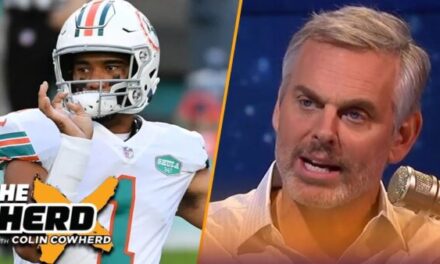
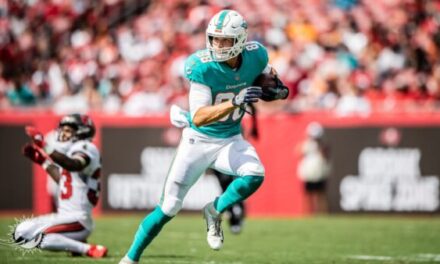

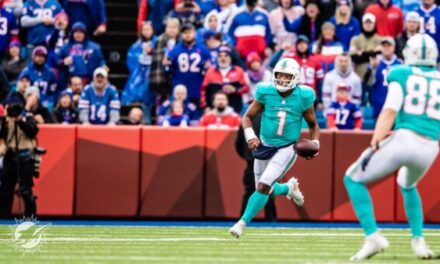





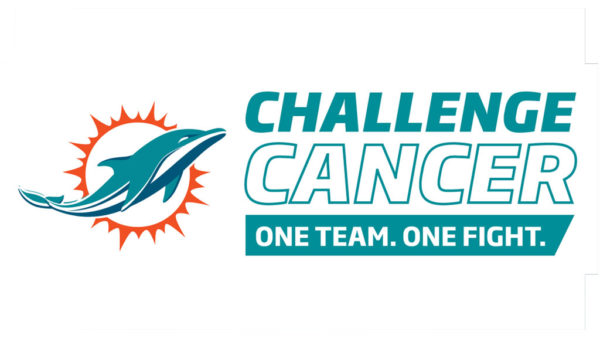



Best article, and “breakdown” I’ve read in YEARS ! Fantastic work here and great use of video as well. I excited about these defensive additions – Jenkins, Mckinney, and Butler will greatly improve this defense, and we didn’t break the bank. congrats on a great article.
Thanks Lou! – KD
Absolutely! Great work on deciphering the Defense and why the Free agents were so desirable for Miami to get – I’d love to see more!
Best analytic article on the Dolphins defense I have ever read. Thank You! There are so many similarities to how I have been perceiving how the team has been improved by these moves. I ask one thing additional of you – after the draft, do the same analysis for the offense. Will be looking for it!
Thanks Bob, I appreciate the kind words! I’m certainly planning to do something on the rookies after the Draft. But doing something for the offensive players might be doable before April 29th. – KD
This draft is deep at WR and OL, not so much at DE and OLB. I would take Jaelleen Phillips at #6 , Who’s ever left at # 18 Javin Davis, Micah Parsons, or Zaven Collins, at #36 whos ever there between Travis Eitiene, Naja Harris, Michael Williams, at # 50 Quienen Menerez, at #81 WR Terrace Marshall,Elijah Moore, or D’Wayne Eskridge!!!
Well written article. If in fact we run more 4 man fronts, J Houston just makes to much sense to go out and sign to a short term contract giving the edge we draft a year or 2 to acclimate
Thanks Brent! I’ve wondered if there are guys they may target after the Draft if they miss on some of their targets. Jadeveon Clowney was who I had in mind, but Justin Houston might make sense as well.
Fantastic read – thanks for all the work!
Thanks! Glad you enjoyed it. – KD
Reading through a second time, your writing convinces me Miami would pick up Owusu-Koramoah before a DE (as much as I love Kwitty Paye he’s still a big projection due to limited production) – none of the current safeties have the physicality desired for the Big Nickel, and that’s a key back end piece, While Jones did an admirable job in manning some of it last year, as you noted he’s simply not big enough for the execution of that role. JOK is probably the best cover lb, with Cox the next best? But Cox is routinely viewed as a drag down tackler while JOK is lauded as being much more physical on the takedowns. And if the idea is get more amorphous as a defense, Zaven Collins has a very strong appeal too. I think Miami was hoping he’d slip to the top of round 2 for them but that may be their call at 18. Round 3 might be where we try to pick up the DT/DE Williams who had wow numbers at his pro day, but no high level production other than his last 3 games this season.
On offense, I can see them falling for Dalman, one of the best run blocking rated C in the draft and good choice in Round 5 or later. As much as I’d love to see Meinerz or Humphrey, their draft costs continue to rise so slotting either as later round 2 or early round 3 isn’t in the cards. And for late flyers on WR, I’d love to see us pick up WR Camp or WR Strachan in the later rounds. Big, physical, fast and explosive. I had liked RB Stevenson, but his recent play in the SR bowl left me looking back up to the top of the draft board for Harris.
I’m going to dive a little deeper in to the DE prospects, especially Kwity Paye, on my next podcast. I think some of the issue with Paye is that Don Brown moved him around so much at Michigan. He’s not a finished product, especially in terms of pass-rush moves, but Miami will notice that versatility. Might just remind them of Trey Flowers, whom Paye is built pretty closely like.
As for JOK/Brandon Jones, I think they’ll continue to let Jones develop there. They don’t have to have a Patrick Chung clone – Jones does a lot of what he does, and accomplishes some of it in a different manner (i.e. being more of an overhang player and using athleticism vs. being on the LOS and using hands to defeat blocks, set backside edge, etc.).
I really like Collins, but I don’t see him as being an edge defender the way some do. I do wonder if Benardrick McKinney’s addition, which I love, allows Miami to step back from taking an off-ball LB high.
Kevin, great informative article on the defense. The last two off-seasons we brought in linebackers to shore up run defense. How bout drafting a pure nose tackle (Tyler Shelvin). Hope you do an article on offense. I still have no idea what our offense will look like. Keep up the great work.
Daniel, thank you for the kind words. I’m currently working on one for the offensive acquisitions. Hoping to get it published before the Draft.